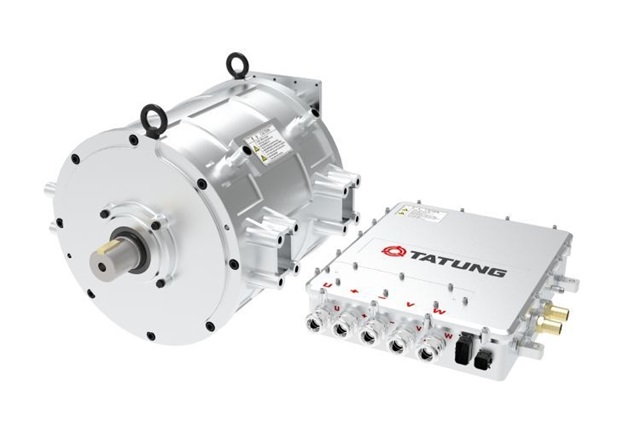The electric vehicle (EV) sector has long been a theater of bold bets and volatile outcomes. Rivian, once a darling of the EV revolution, now faces a critical juncture as its 2025 financial results reveal a net loss of $743 million—nearly halved from the $1.52 billion loss in the same period last year but still a stark reminder of the sector’s challenges. With production costs rising, regulatory credit income dwindling, and investor sentiment wavering, the question looms: Can Rivian’s strategic pivot toward efficiency and electrification partnerships reverse its fortunes, or is the company’s current trajectory a red flag for growth-oriented portfolios?
The Cost Conundrum: A Perfect Storm of Supply Chains and Policy Shifts
Rivian’s financial struggles are emblematic of broader industry headwinds. The company’s per-vehicle loss in Q2 2025 stood at $32,000, a marked improvement from $139,000 in Q3 2022 but still a far cry from profitability. This is driven by a perfect storm:
– Supply chain bottlenecks: China’s export curbs on rare earth metals have inflated material costs by $25,000 per vehicle.
– Regulatory tailwinds: The phasing out of the $7,500 federal EV tax credit and the elimination of penalties for automakers failing to meet fuel economy standards have slashed Rivian’s revenue from regulatory credit sales by over 70%.
– Tariff impacts: A 25% tariff on auto parts has added $2,000–$3,000 per vehicle to production costs, further eroding margins.
These pressures have forced Rivian to scale back its 2025 delivery guidance to 40,000–46,000 units, down from an initial target of 51,000. While the company’s cash reserves ($7.2 billion as of Q1 2025) provide a 22-month runway, the path to breakeven remains fraught.
Strategic Pivots: The Volkswagen Partnership and R2 Efficiency Drive
Rivian’s response to these challenges hinges on two pillars: a $5.8 billion joint venture with Volkswagen and the launch of its R2 midsize SUV.
1. Volkswagen: A Lifeline or a Long-Term Bet?
The Volkswagen-Rivian partnership, announced in November 2024, is a game-changer. Volkswagen’s phased capital injections—$2.3 billion in 2024 and up to $3.5 billion by 2028—provide critical liquidity. More importantly, the collaboration aims to reduce Rivian’s bill of materials (BOM) costs for the R2 by 45%, targeting a per-unit cost of $32,000. This is pivotal for competing in the $40,000–$50,000 mass-market segment, where Rivian’s current R1 models ($70,000+) are priced out.
The partnership also grants Rivian access to Volkswagen’s supply chain expertise, which could mitigate U.S. tariff impacts by localizing parts production. Analysts note that the R2’s projected BOM cost ($32,000) is nearly half that of the R1 ($54,600), a 50% reduction that could transform Rivian’s gross margins. However, these savings are contingent on the successful integration of Volkswagen’s manufacturing capabilities and the timely launch of the R2 in H1 2026.
2. R2 Efficiency: A Blueprint for Cost Reduction
Rivian’s R2 platform is designed to be a cost-efficient, scalable solution. The company has already streamlined production by:
– Eliminating over 100 battery assembly steps and 500 vehicle components.
– Transitioning to in-house Enduro motors, reducing drive unit costs by 47%.
– Negotiating better material prices and leveraging economies of scale.
These efforts have cut automotive COGS by $22,600 per vehicle in Q1 2025 compared to the prior year. However, Rivian still reports a per-vehicle loss of $32,705, underscoring the need for further optimization. The R2’s anticipated $45,000 price point—65% lower than the R1—could attract a broader customer base, but success depends on achieving production volumes of 200,000 units annually by 2028.
Investor Sentiment: Cautious Optimism or a High-Risk Bet?
Rivian’s stock has mirrored the company’s mixed signals. Despite two consecutive quarters of positive gross profit in 2025, the stock closed 2.3% lower after Q2 results, reflecting investor concerns over production pauses and macroeconomic uncertainty. Analysts at Cantor Fitzgerald and Mizuho maintain “Hold” ratings, with price targets of $15.00 and $13.00, respectively.
The Volkswagen partnership has injected some optimism, with software and services revenue surging to $318 million in Q2 2025 (up from $88 million in 2024). However, Rivian’s adjusted EBITDA loss of $329 million in Q1 2025 and a projected $1.7–$1.9 billion loss for the full year highlight the risks. The company’s recent $1.25 billion green notes offering and plans for a $2 billion high-yield bond raise underscore its need to manage debt while scaling operations.
Historically, Rivian’s stock performance around earnings releases has shown mixed outcomes. A simple buy-and-hold strategy during these periods would have experienced an average return of -1.2% over the past three years, with a hit rate of 42% for positive returns and a maximum drawdown of 15% in the most volatile quarter. These results suggest that while earnings events occasionally drive short-term gains, they also carry significant downside risk.
if (!window.__oversea_ainvest__) {\r
window.__oversea_ainvest__ = {\r
ENV: \”production\”\r
}\r
}\r
}\r
}”}], “props”: {“title”: “Earnings”}, “path”: “//cdn.ainvest.com/frontResources/s/foiegras/earnings/0.0.1/earnings@0.0.1index.js”, “meta”: {“js_url”: “//cdn.ainvest.com/frontResources/s/foiegras/earnings/0.0.1/earnings@0.0.1index.js”}, “style”: {“background-color”: “”, “padding”: “0”, “color”: “”, “display”: “block”, “width”: “auto”, “position”: “relative”, “height”: “auto”}, “isMaterial”: true, “_id”: 19, “id”: “iwencai/earnings1”, “hasEditor”: true, “packed”: false, “events”: [], “isSetDefaultValue”: true}]}}, “page”: {“layout”: {“layout_data”: “[{\”uuid\”: \”gyyEarnings\”, \”showType\”: \”jgyLowcode\”, \”children\”: []}]”}, “render_for”: “aigc”, “voice_txt”: “”, “uuid”: “39192”}}”>
The Road Ahead: Execution Over Hype
Rivian’s long-term viability hinges on three factors:
1. R2 Launch Success: The R2’s ability to achieve cost targets and capture market share will determine whether Rivian can transition from a niche player to a mass-market contender.
2. Volkswagen Synergies: The joint venture’s cost-saving projections must materialize, and Rivian must avoid the pitfalls of over-reliance on a single partner.
3. Regulatory and Tariff Resilience: The company’s financial model is sensitive to policy shifts. A resurgence of EV incentives or a reversal of tariffs could provide a tailwind, while further headwinds could exacerbate losses.
For growth-oriented portfolios, Rivian represents a high-risk, high-reward proposition. The company’s strategic pivots are ambitious and technically sound, but execution risks remain. Investors should monitor key milestones:
– Q3 2025: Completion of Normal, Illinois plant retooling for R2 production.
– H1 2026: R2 launch and initial delivery volumes.
– 2027: Breakeven EBITDA target and scaling of Georgia plant capacity.
Conclusion: A Calculated Bet for the Long-Term
Rivian’s journey is a testament to the challenges of disrupting a century-old industry. While the company’s widening losses and production hurdles are concerning, its strategic focus on efficiency, electrification, and partnerships offers a plausible path to profitability. For investors with a multi-year horizon and a tolerance for volatility, Rivian’s R2 and Volkswagen collaboration could be catalysts for a turnaround. However, the current financial trajectory—coupled with macroeconomic uncertainties—demands caution.
In a sector where innovation and execution are paramount, Rivian’s success will ultimately depend on its ability to deliver on its vision. For now, the market watches closely, betting on whether this EV pioneer can navigate the storm and emerge as a leader in the electrified future.


